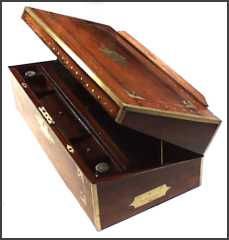 |
This is a truly exceptional example
of this kind of box. The figuring of the
wood is very striking and the rich deep
colour contrasts effectively with
the brass decoration. Here the
box is propped half open (see mechanism
below) and is used with the book rest
which is kept in the upper part of the
box when not in use.
|
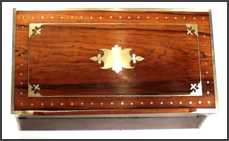 |
The surrounding as well as the
decorative brass is of a substantial
gauge compared to later Victorian boxes
and it performs a dual function of
protecting and enhancing the box.
The Brazilian Rosewood (Dalbergia
Nigra) is a thick saw cut veneer and
it was a greatly prized wood on account
of its strength and figure. |
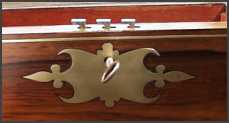 |
Detail showing the escutcheon
which continues the fleur des lys motif
of the corners and the top panel. There
is a working lock and key. Here the
working lock is in the locked position.
When opened the surface of the lock is
flat.
|
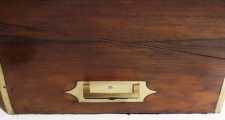 |
The box has side handles in the
military style. The handles fold flush
with the surface of the box when not in
use. |
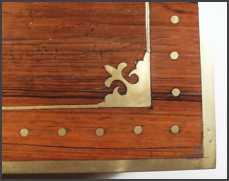 |
Corner showing the fleur des
lys and dot design. This design which is
characteristic of the Regency period
combines stylised hint of flora with
simple lines and dots. It is
elegant without being over fussy and
allows the beauty of the wood to express
itself.
|
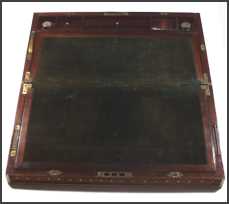 |
Open view showing the writing
surface. This is covered in thin velvet.
The facings are all rosewood. |
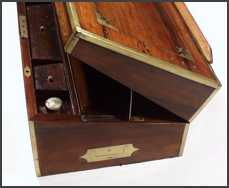 |
On the left the brass support of the
box (when half open for use with reading
stand) is seen in the propped position.
This is lifted up to prop up the box (see
below). |
 |
The corrugated brass line is
the top part of the book stand position
prop mechanism. Different angles of
opening can be achieved by using
different grooves. All the
facings are in rosewood.
|
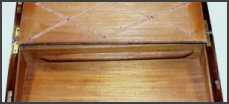 |
The inside of the box under the
lower flap. Writing paper was kept
here. It is made of unpolished
mahogany. Criss crossed ribbon for
supporting notes.
The reading stand is stored here when
not in use. It is visible under the flap.
|
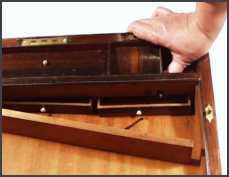 |
This is the area under the top
flap. Under the pen and inkwell
tray there is a secret compartment with
three small drawers.
Access to these is obtained by
releasing the spring loaded panel which
hides them. This is done by removing the
inkwell and pressing the base of the wood
as shown.
The catch which holds and releases the
panel can be seen to the right of the
drawer.
The drawers are mahogany faced with
rosewood with small turned handles.
|
| |
|
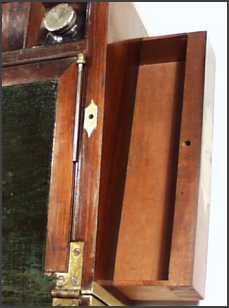 |
There is a large side drawer
under the top part of the box. This is
released by pulling up a brass rod which
can be seen in position in the previous
photograph. Here you can see the
rod pulled up.
|
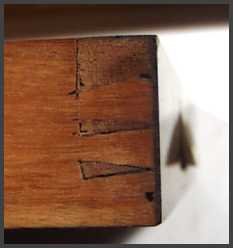 |
Detail showing the side of the
drawer when pulled out. Note the
fine dovetailing construction and the
thickness of the saw cut rosewood
veneer.
|
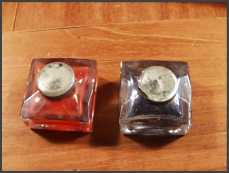 |
The writing box is in very good
condition. It still contains its
original inkwells which can be seen on
left.
|